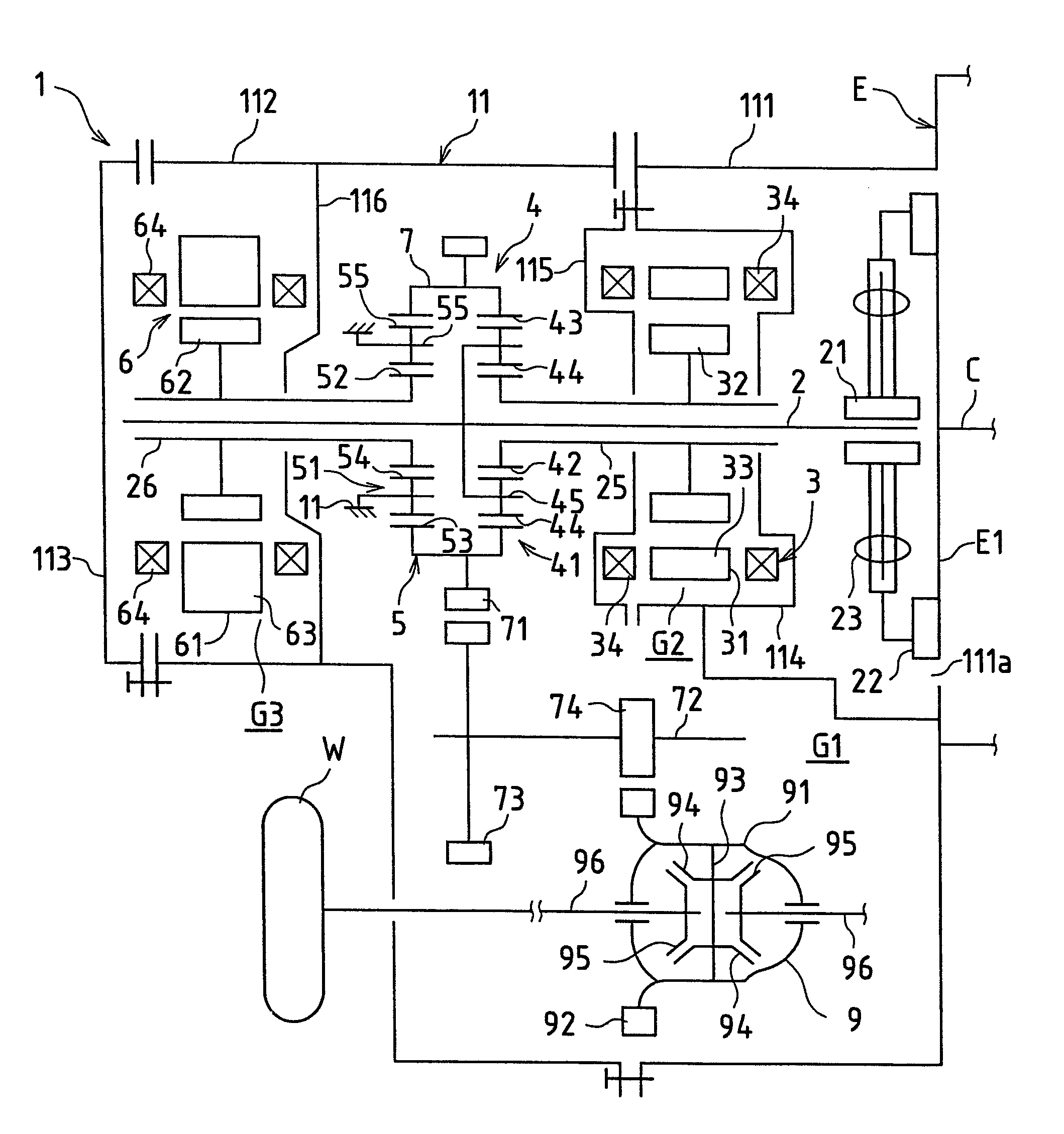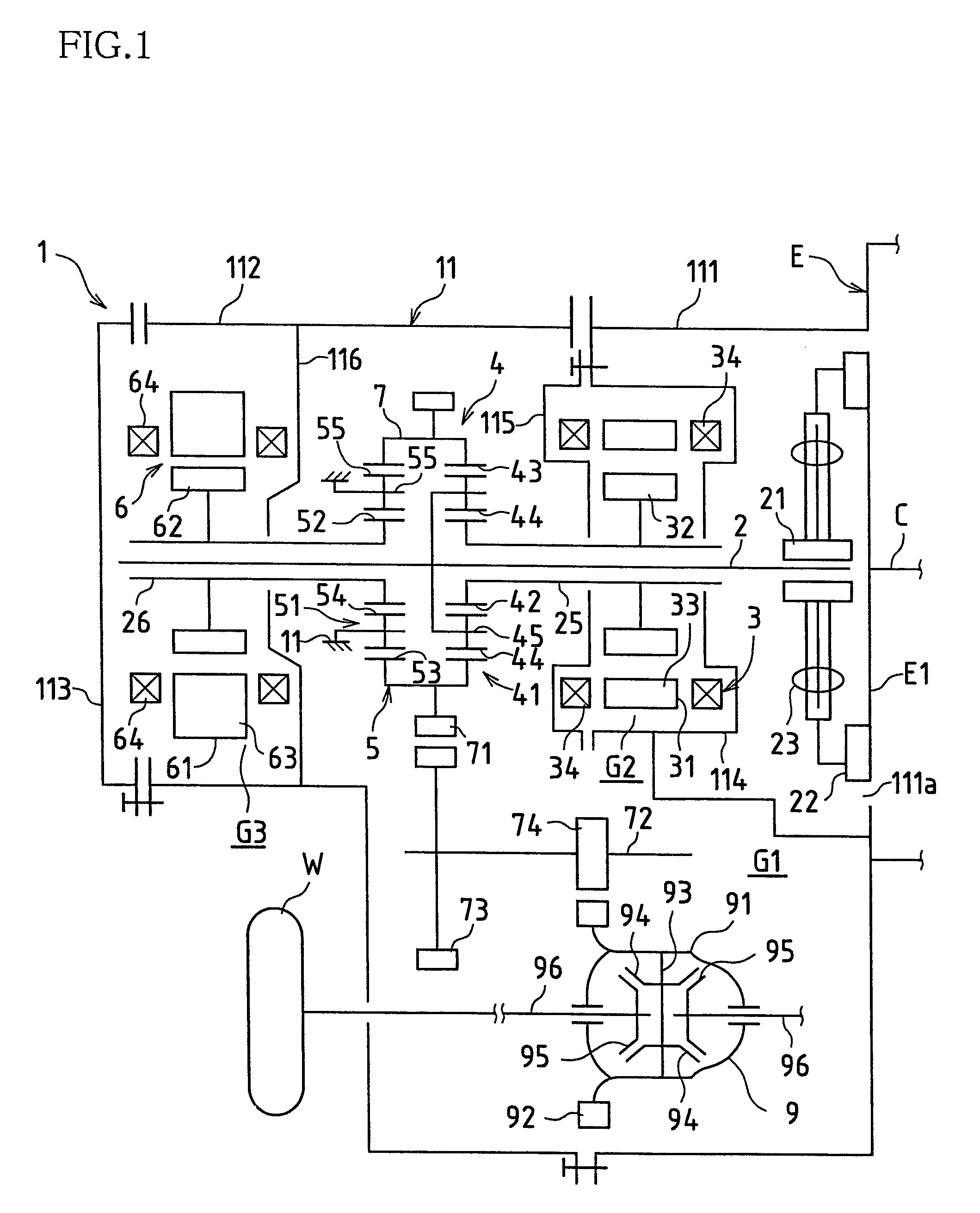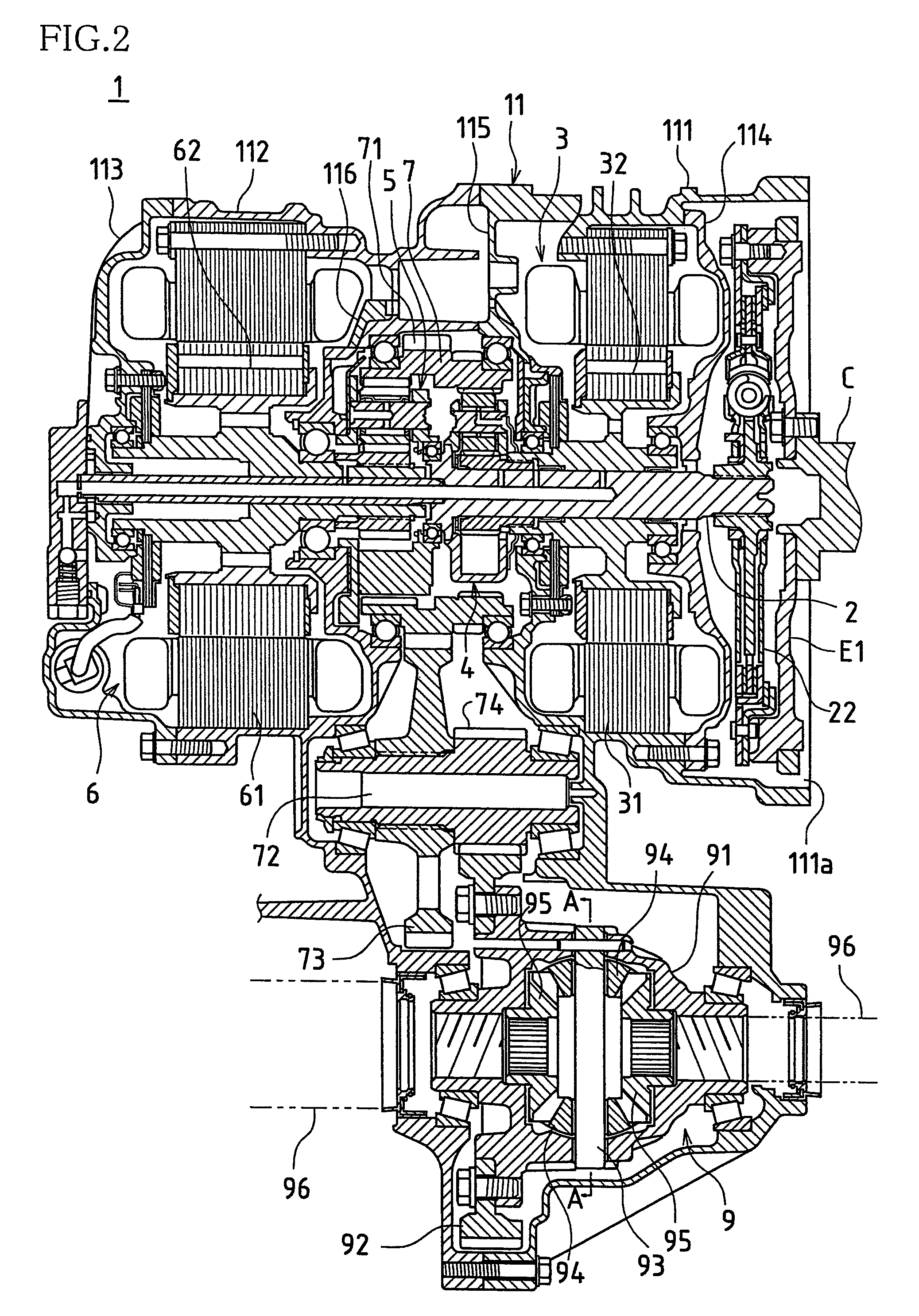Differential device
a technology of a differential device and a pinion shaft, which is applied in the direction of electric propulsion mounting, transportation and packaging, gearing, etc., can solve the problems of difficult to guide the lubricating oil, the sliding surface of the pinion shaft is liable to wear, and the configuration of the pinion shaft is extremely complicated, so as to achieve easy introduction and easy introduction. , the effect of easy introduction
- Summary
- Abstract
- Description
- Claims
- Application Information
AI Technical Summary
Benefits of technology
Problems solved by technology
Method used
Image
Examples
first embodiment
[0022]FIG. 1 shows a skeleton view of a transaxle of a hybrid vehicle of an FF configuration (that is, front-engine, front-drive; front-wheel drive having the engine mounted at the front of the vehicle) provided with a differential device according to a first embodiment of the present invention.
[0023]As shown in FIG. 1, a transaxle 1 is configured as a gear train including three shafts (an input shaft 2, a countershaft 72, and a front driveshaft 96, as explained hereinafter). Furthermore, an engine E is disposed at a side of the transaxle 1 (a right side in FIG. 1), and the transaxle 1 is configured so as to receive a drive force from the engine E. An internal combustion engine, specifically, a gasoline engine, a diesel engine, an LPG engine, a methanol engine, or a hydrogen engine, etc. may be used as the engine E. In this embodiment, the present invention is explained in terms of usage of a gasoline engine as the engine E. The engine E is configured such that motive energy can be ...
second embodiment
[0054]The following is a description of a second embodiment of the present invention, with reference to FIG. 4.
[0055]The second embodiment relates to a differential device configured so as to provide lubricating oil to a sliding surface of a pinion shaft with respect to a pinion gear in a situation wherein a lower section of a differential case is not immersed in lubricating oil at a bottom section of a transaxle case. It should be noted that, with the exception of the fact that the lower section of the differential case is not immersed in lubricating oil at the bottom section of the transaxle case, the configuration of the second embodiment is identical to that of the above-explained first embodiment, and therefore, the same reference symbols are used and a detailed explanation thereof is omitted.
[0056]That is to say, as shown in FIG. 4, an oil jet J spraying lubricating oil O towards an end of each of the lubricating oil channels 10 upon rotation of the differential case 91 is pro...
PUM
 Login to View More
Login to View More Abstract
Description
Claims
Application Information
 Login to View More
Login to View More - R&D
- Intellectual Property
- Life Sciences
- Materials
- Tech Scout
- Unparalleled Data Quality
- Higher Quality Content
- 60% Fewer Hallucinations
Browse by: Latest US Patents, China's latest patents, Technical Efficacy Thesaurus, Application Domain, Technology Topic, Popular Technical Reports.
© 2025 PatSnap. All rights reserved.Legal|Privacy policy|Modern Slavery Act Transparency Statement|Sitemap|About US| Contact US: help@patsnap.com



